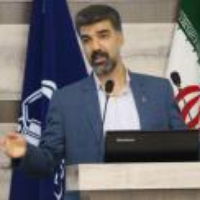Spatial Analysis of the Outcome of the Tenth Presidential Election of Iran in Mashhad
Author(s):
Article Type:
Research/Original Article (دارای رتبه معتبر)
Abstract:
Introduction
Democracy is known as the lawful management of a political society which is executed through the mechanism of transferring the will of population to governance for the administration of countries. Elections are, indeed, considered as the most significant manifestation of democracy. In a democratic society, the right to vote followed by the right to choose or dismiss governments is the most basic civil right. However, it should be noted that the outcome of elections rarely expresses the pure, logical outlook of voters as geography plays a role of utmost importance in this regard. In fact, the outcome of various elections is influenced by spatial and geographical variables at individual and social levels; additionally, there are factors and actors at local, regional, national, and even international levels that affect the outcome of elections. In truth, local factors affect people’s decision-making in elections while the geographical structure of voting systems indicate the outcomes.
Theoretical Framework
Geography of election is one of the branches of political geography which focuses on geographical regions as platforms for electing representative at local, regional, and national levels. In fact, geography of election focuses on various geographical aspects of elections, referendums and their organization and results in particular, while considering cultural, economic, and other conditions as influential at various local, regional, and national levels. In terms of the spatial dimension, vote collection patterns are diverse; in geography of election, the citizens’ political behavior patterns derived from diversities in outlooks and demands toward dominant economic, cultural and legal structures can be drawn as a map and examined.
Methodology
In terms of nature and method, the present study is considered as a descriptive-analytical research. Data collection was carried out using library and document studies. The main problem of the study revolves around the spatial distribution of the candidates’ votes during the tenth Iranian presidential election in Mashhad. Furthermore, this study seeks to investigate if there is a significant relationship between the number of votes in different regions of Mashhad to candidates and the social-physical features and indices of such regions. The ArcGIS software and Interpolation – IDW tool were used for the examination and spatial analysis of the votes and demonstrating their maps at the analysis level of Mashhad municipal regions. The PASW software was also used for calculations and statistical tests.
Results and Discussion
In the process of elections, particularly the Iranian presidential election, there are a number of various factors and variables affecting the final decision of the voters for selecting a candidate among numerous volunteers. In other words, voting patterns for candidate in elections are a function of components such as the candidates’ characteristics and individual features, as well as political, economic, and sociocultural macro variables and finally, the characteristics and personal features of voters. In this framework, variables including age, gender, education, religion and nationality, financial status, sense of belonging, etc., among the voters along with the candidates’ characteristics and personal features such as gender, education, appearance, power of speech, charisma and social base, party affiliation, executive and administrative backgrounds, etc., play an effective role in the number of votes casted to candidates. Ultimately, more general economic, social and political variables such as the governments and other actors’ policies and actions, dominant media discourse, social networks, experts, religious leaders, ethnic and religious figures and authorities, and others are also influential in this area.
Conclusion and Suggestions
One of the most important, effective variables on citizens’ political behavior involves their personal characteristics which highly rely on their economic, social, and cultural bases. In this study, the impacts of variables such as economic, welfare, educational and general developments on the citizens’ voting patterns during the tenth Iranian presidential election were analyzed and examined across Mashhad’s 12 districts. The results of the study show that the spatial distribution of candidates’ votes across various regions of Mashhad is a function of economic, social and cultural features and indices in different regions. In detail, the citizens’ election-related behaviors in various regions fit the economic, social, and cultural development indices and levels of those regions; moreover, the common needs, interests, and characteristics of citizens across various regions have caused a difference between voting patterns in the city’s districts. In fact, given an increase in development levels for different variables, the percentage in the number of votes to Mr. Ahmadinejad are reduced whereas such a trend for other three candidates have been inverse, particularly for Mr. Mousavi and Mr. Karoubi.Keywords:
Language:
Persian
Published:
Journal Of Geography and Regional Development Reseach Journal, Volume:16 Issue: 1, 2019
Pages:
1 to 24
magiran.com/p1937955
دانلود و مطالعه متن این مقاله با یکی از روشهای زیر امکان پذیر است:
اشتراک شخصی
با عضویت و پرداخت آنلاین حق اشتراک یکساله به مبلغ 1,390,000ريال میتوانید 70 عنوان مطلب دانلود کنید!
اشتراک سازمانی
به کتابخانه دانشگاه یا محل کار خود پیشنهاد کنید تا اشتراک سازمانی این پایگاه را برای دسترسی نامحدود همه کاربران به متن مطالب تهیه نمایند!
توجه!
- حق عضویت دریافتی صرف حمایت از نشریات عضو و نگهداری، تکمیل و توسعه مگیران میشود.
- پرداخت حق اشتراک و دانلود مقالات اجازه بازنشر آن در سایر رسانههای چاپی و دیجیتال را به کاربر نمیدهد.
In order to view content subscription is required
Personal subscription
Subscribe magiran.com for 70 € euros via PayPal and download 70 articles during a year.
Organization subscription
Please contact us to subscribe your university or library for unlimited access!


